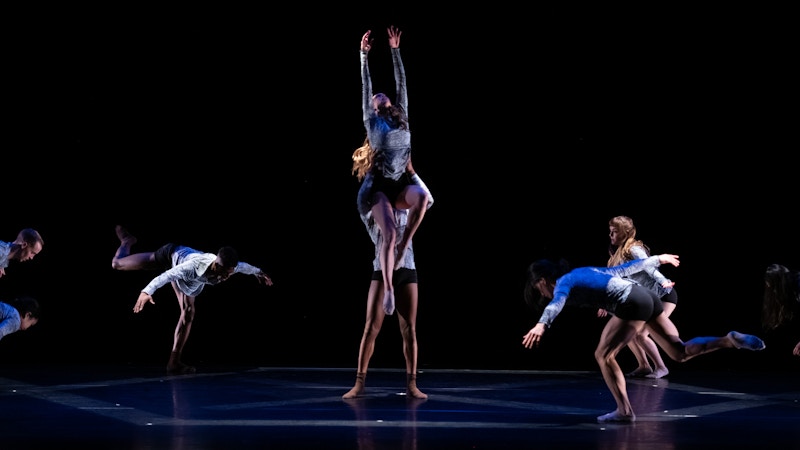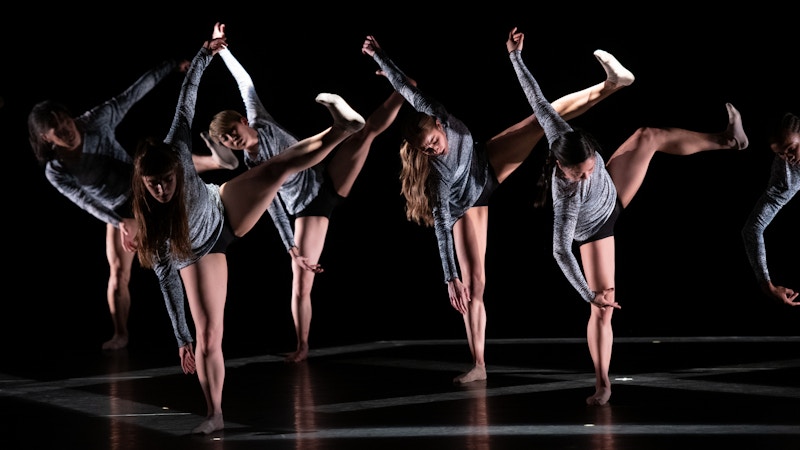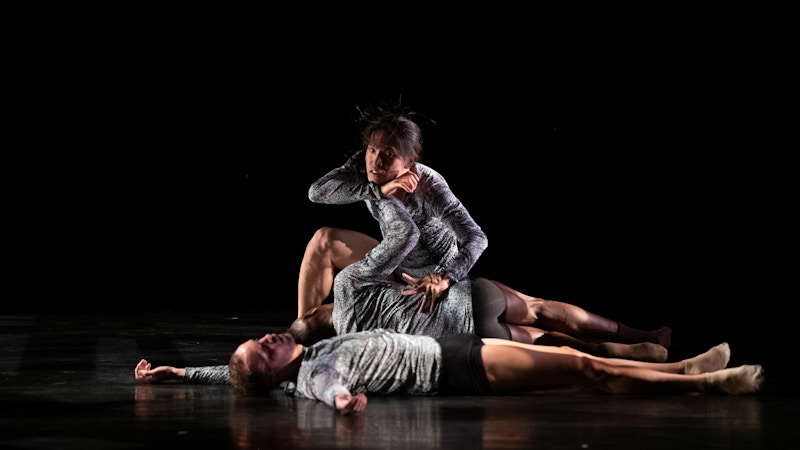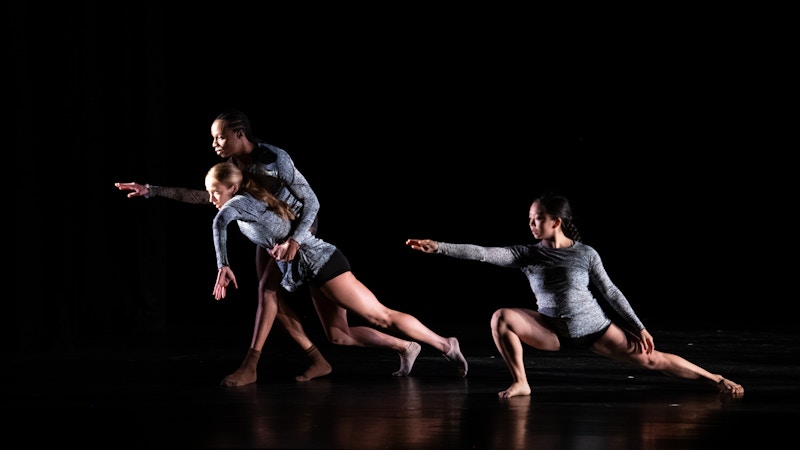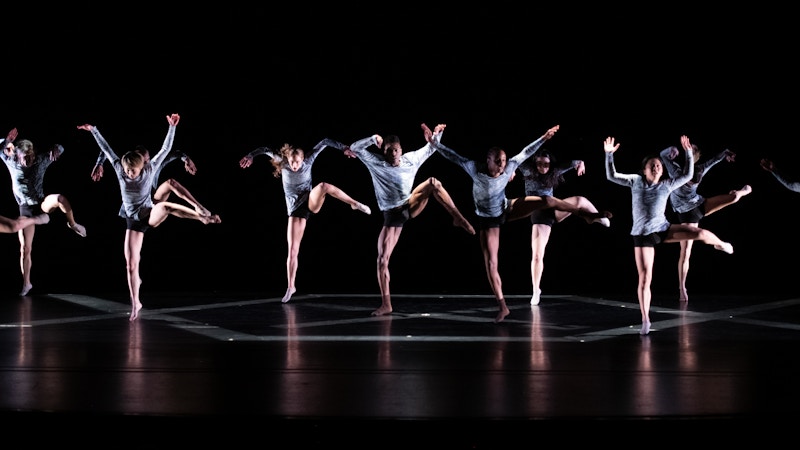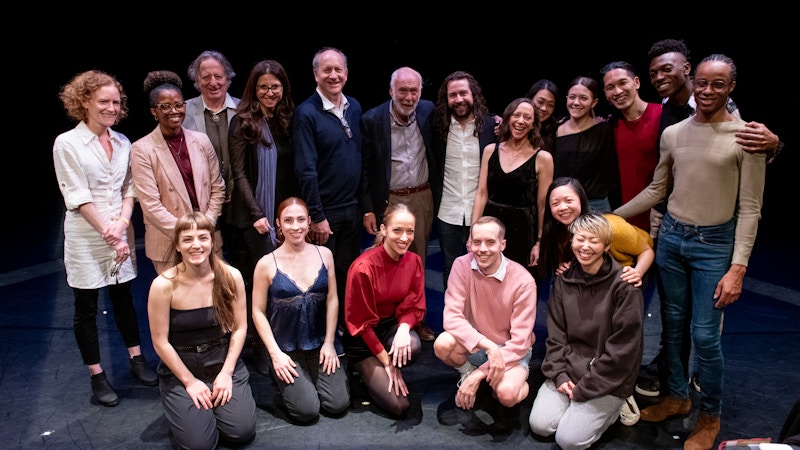
Math and Dance Collide at ‘Dance of the Diagram’
Unless you’re a math whiz, “cohomology” is a word you’ve probably never heard. An oversimplified (though still hard to understand) explanation is that cohomology is a tool to extract the algebraic structure from complicated geometric spaces.
Cohomology is an important concept, with applications ranging from pure math to quantum physics, string theory and robotics, but its complexities are far too abstract for a nonexpert to grasp. Recently, however, an innovative production has given audiences a taste of cohomology through a medium that’s uniquely suited to conveying the abstract: dance.
Over a two-night engagement on April 29 and 30, an 11-person troupe from the Barkin/Selissen Project contemporary dance company performed “Differential Cohomology; Dance of the Diagram” at John Jay College of Criminal Justice’s Gerald W. Lynch Theater in New York City. The performance highlighted the similarities between math and dance.
“Mathematics and dance — [they’re both] this abstract, nonlinguistic kind of communication,” said neuroscientist Heather Berlin, who moderated a panel discussion following the April 30 show. “You’re taking something from the world of the mind and instantiating it into the body, into the physical realm.”
“Dance of the Diagram,” choreographed by Kyla Barkin and Aaron Selissen, premiered in 2011. The idea for the show came from mathematician Jim Simons — who also commissioned the piece — during a walk with Barkin.
“I had just been working on a paper, and there was a very beautiful diagram in the paper with arrows pointing this way and that way,” said Simons, who is co-founder and co-chair of the Simons Foundation. “I thought maybe it would make a good dance — there are arrows pointing the way the dancers should go, and so on.”

Simons wrote that 2007 paper, titled “Axiomatic Characterization of Ordinary Differential Cohomology,” with Dennis Sullivan, the Albert Einstein Chair at the City University of New York Graduate Center and a distinguished professor at Stony Brook University. The figure Simons found beautiful is called a character diagram — an important part of differential cohomology, which Simons established with fellow mathematician Jeff Cheeger in the 1980s.
The character diagram became the jumping-off point for Barkin and Selissen’s choreography, with their conversations with Simons another source of inspiration. “As he was teaching us this, he’s adding personality traits and a story to it,” Selissen said. “Maybe it’s because he was a teacher before, or maybe that’s how he thinks of the math.”
It was through their conversations that Selissen discovered the similarities between math and dance. “I found that there’s a world of creativity that goes into thinking about these higher-level mathematics that I didn’t really realize,” he said. “It’s the same kind of creativity that I use in dance.”
Those same mini-lectures formed the base of what Barkin calls the show’s “movement vocabulary.” She and Selissen identified eight terms used by Simons, and translated them into motion. “I thought, ‘Well, each of these things has its word,’ ” she said. “ ‘It looks like something, it has a shape, it has sound, and Jim had certain embodied gestures in his physicality when he would say each term, so I’ll go with that.’ ” Barkin and Selissen strung the terms into a phrase: “Like putting words together to make a sentence,” she explained.
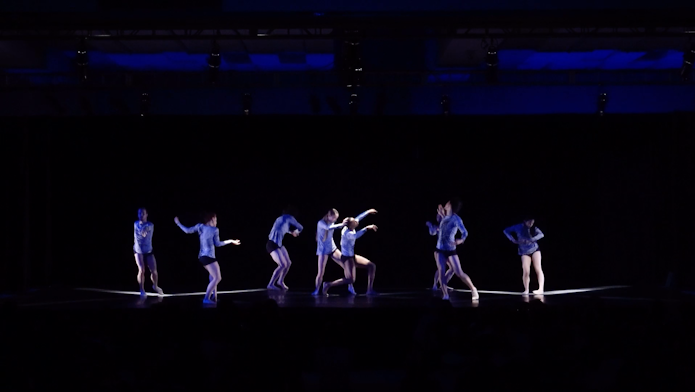
By clicking to watch this video, you agree to our privacy policy.
Even the performance’s lighting echoes the mathematics, with lines of light forming the hexagonal shapes found in the cohomology diagrams. Those shapes help define the dancers’ movements across the stage as they twist, leap, reach and collide to music by the Sirius Quartet. At times the performers move in conformity; other times, they are in conflict or chaos.
“Last night, I was reminded how connected we are, how mathematicians often speak of concepts of creativity and beauty, elegance, space and of course numbers,” said Christine Jowers, editor-in-chief of The Dance Enthusiast, recalling the April 29 performance. “And then I was reminded that dancers often speak of structure, of the DNA of a work, of problem-solving, and of space and numbers. Our collaborations are essential. Math is everywhere. And it dances.”
The April performances of “Dance of the Diagram” were made possible thanks to the support of the Alfred P. Sloan Foundation, the Lower Manhattan Cultural Council, the Department of Cultural Affairs and the Simons Foundation.
